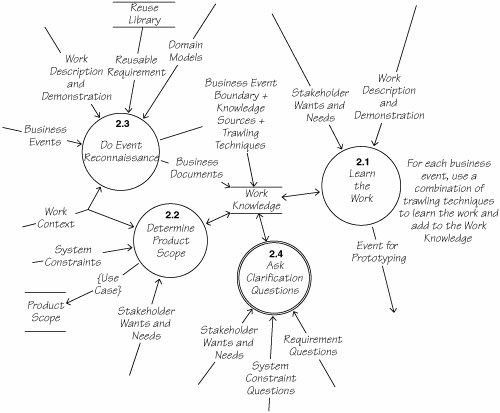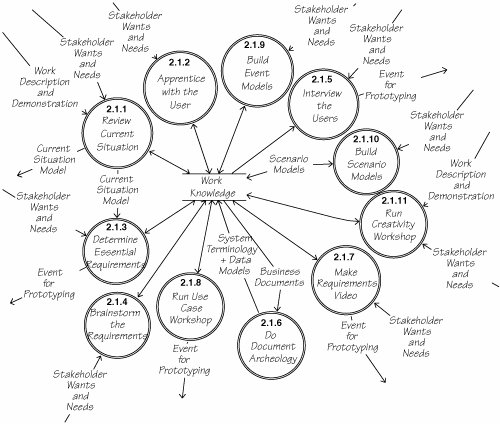Make Initial Estimate (Process Notes 1.3.4)
| Make your first estimate of the effort required to build the product. The estimate at this stage does not have to be highly precise, but must be realistic. It can be based on such simple metrics as the number of events that the system has to respond to or the number of use cases that will make up the system. The event/use case provides you with a manageable chunk that you can use as the basis for making an estimate. Estimate the average amount of effort for implementing one event and then use this figure to estimate the effort for all events within your context. Depending on how much you know about the data, you may be able to make an initial function point count for the system. The type of count and the counting boundary (the context) have been defined, and an approximation of the data and transaction function types are also known. An estimate can also be made on simple metrics such as the complexity of the data. Roughly speaking, this is the number of data entities that the system will use. It is necessary to know the average cost of installing a data entity for this kind of estimate. While it is not the most accurate of possible estimates, it provides a starting point. Keep in mind that the applicability of the previous history of effort required per function point (or whatever) will be tempered if this is the first time that you have used the proposed development technology. Allow generous time for the learning curve. Diagram 2. Trawl for Knowledge Diagram 2.1. Learn the Work |
EAN: 2147483647
Pages: 371